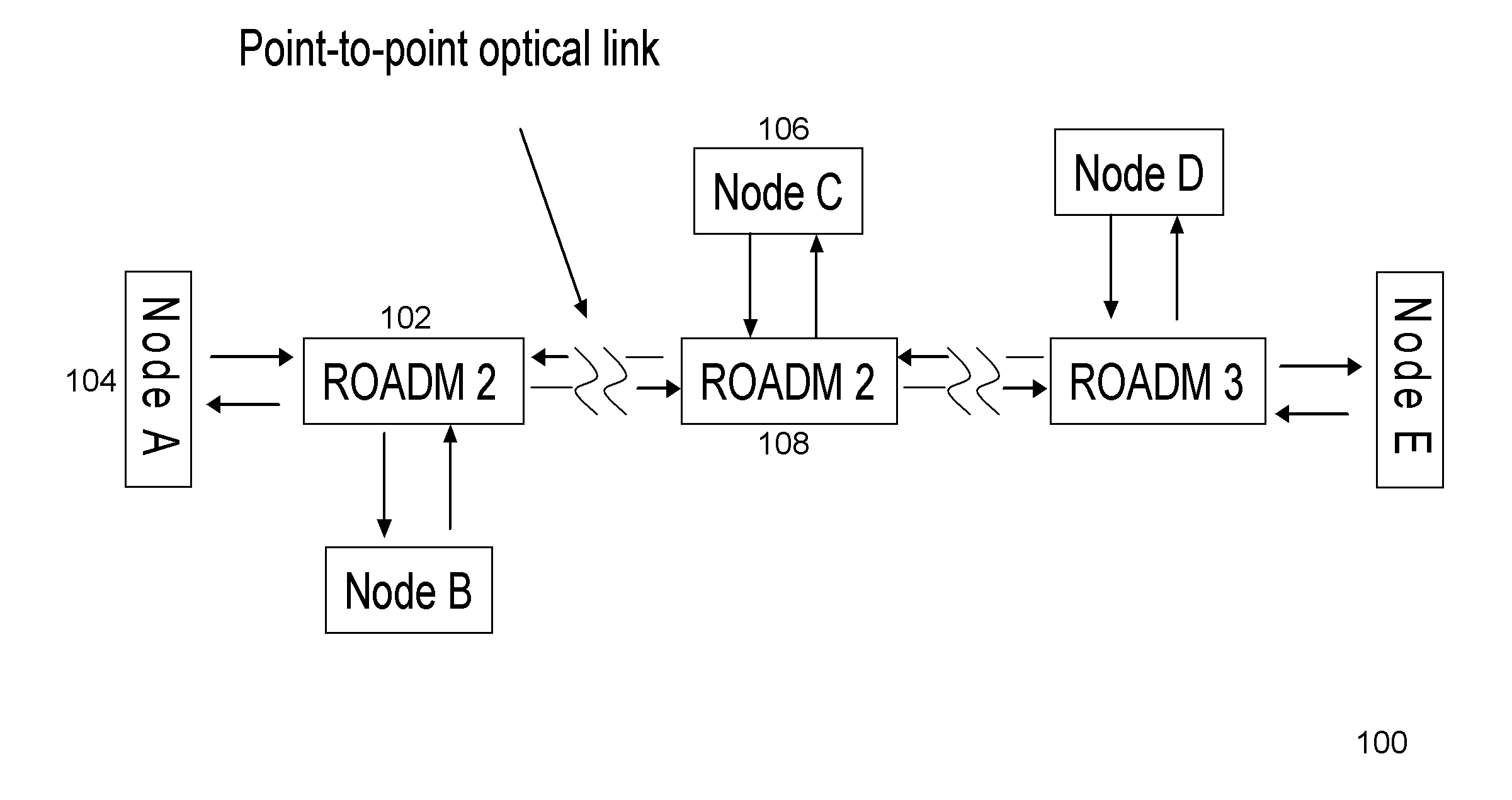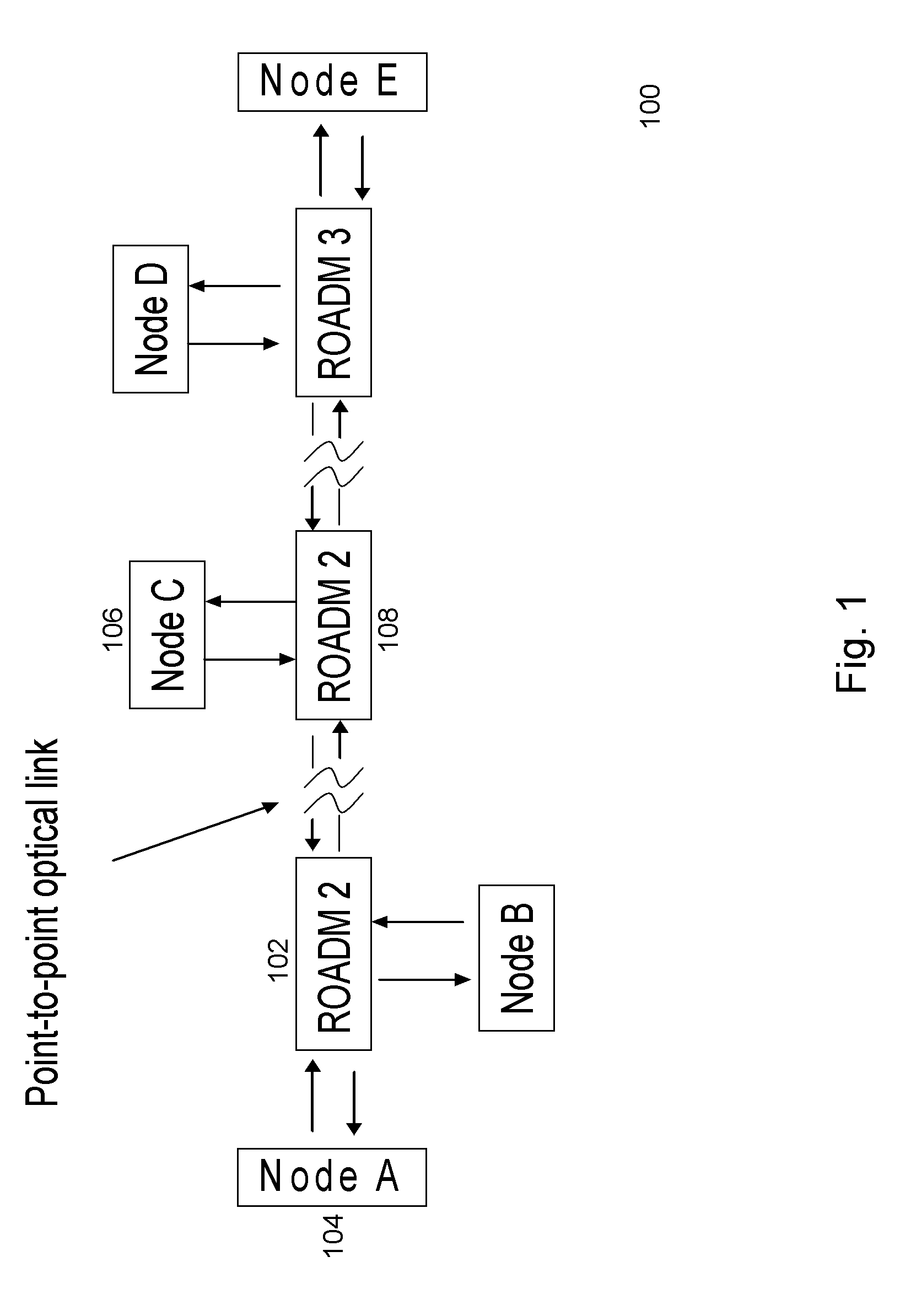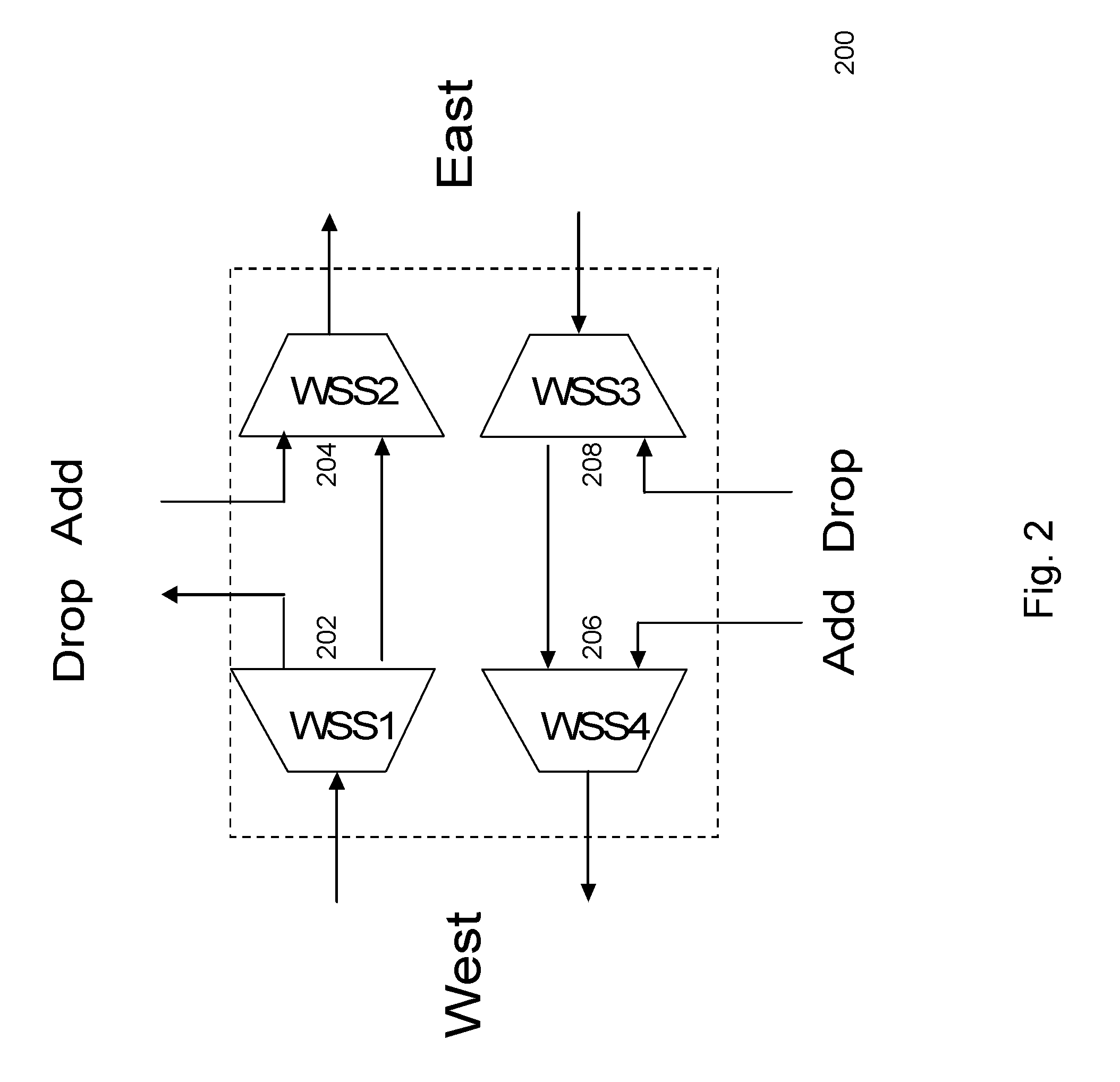Apparatus and method for distributed compensation of narrow optical filtering effects in an optical network
an optical filtering and distributed compensation technology, applied in the field of apparatus and method for distributed compensation of narrow optical filtering effects in optical networks, can solve the problems of limited usable bandwidth for a typical long-haul optical network, limited se and overall fiber capacity, and limited spectral efficiency and overall fiber capacity. achieve the effect of reducing optical filtering effects
- Summary
- Abstract
- Description
- Claims
- Application Information
AI Technical Summary
Benefits of technology
Problems solved by technology
Method used
Image
Examples
Embodiment Construction
[0028]The method and apparatus described herein addresses the channel narrowing problem described above. Narrow optical filtering effects caused by wavelength selective devices, such as wavelength selective switches (WSS), inside a ROADM, may be mitigated.
[0029]A distributed optical filtering effects compensation method and apparatus, described herein, addresses channel narrowing. The embodiments described herein maximize an achievable spectral efficiency (SE), thus improving transport economics. The introduction of an optical equalizer before a WSS pre-equalizes the amplitude of an optical signal received at a ROADM. Alternatively, an optical equalizer may be placed after a WSS to perform post-filtering equalization of an optical signal that has been filtered by a ROADM. The aforementioned optical equalizers may be integrated into a ROADM in an optical network in order to perform distributed optical filtering effects compensation. As a result, the effective channel bandwidth in an ...
PUM
 Login to View More
Login to View More Abstract
Description
Claims
Application Information
 Login to View More
Login to View More - R&D
- Intellectual Property
- Life Sciences
- Materials
- Tech Scout
- Unparalleled Data Quality
- Higher Quality Content
- 60% Fewer Hallucinations
Browse by: Latest US Patents, China's latest patents, Technical Efficacy Thesaurus, Application Domain, Technology Topic, Popular Technical Reports.
© 2025 PatSnap. All rights reserved.Legal|Privacy policy|Modern Slavery Act Transparency Statement|Sitemap|About US| Contact US: help@patsnap.com



